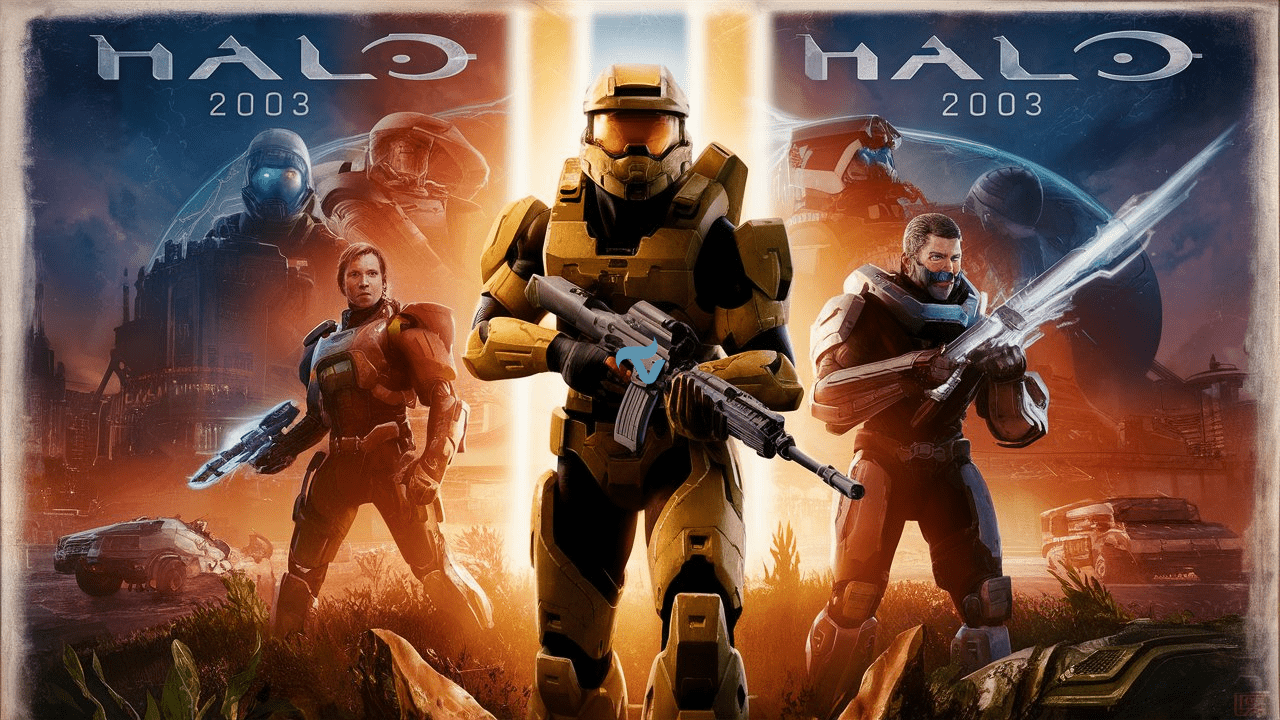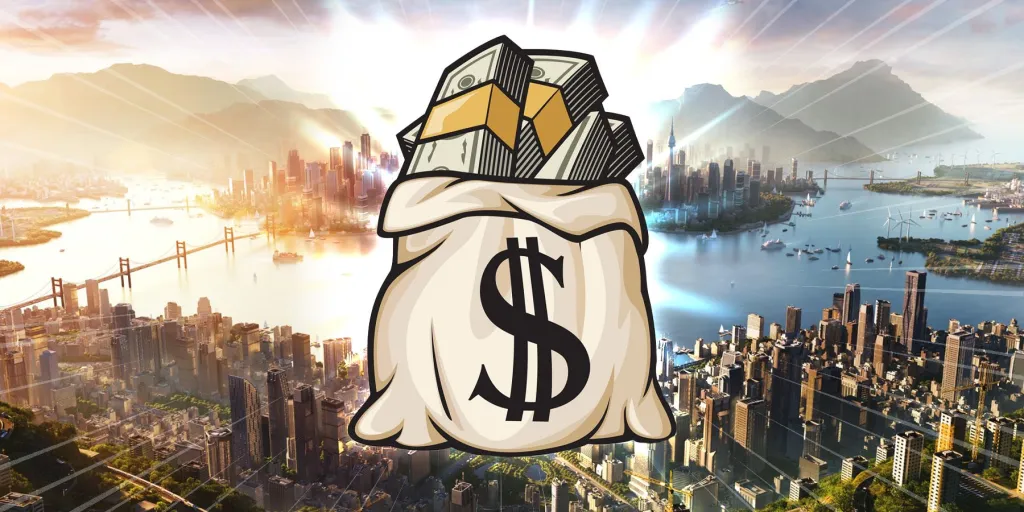Introduction: The Impact of Halo (2003) on Gaming Culture
In 2003, the gaming world was forever changed with halo (2003) game icons banners the release of Halo: Combat Evolved. Developed by Bungie and published by Microsoft, this iconic first-person shooter didn’t just launch a franchise—it shaped the future of gaming. From its revolutionary gameplay to its compelling storyline, Halo has carved its place in history as a defining moment for Xbox and console gaming at large. The game became an instant hit, and its influence transcended beyond gameplay, with its imagery—icons, banners, and character designs—becoming synonymous with the gaming experience itself.
The game’s release brought with it not only a fantastic campaign and innovative multiplayer but also a memorable visual language. The logo of the game, its distinct in-game icons, and marketing banners all contributed to building the immersive Halo universe that fans would recognize at a glance.
In this article, we’ll explore Halo (2003)‘s icons, banners, and their significance in establishing its legacy. From the aesthetic choices that captivated fans to halo (2003) game icons banners the enduring appeal of these visual elements, we’ll examine how these components helped the game achieve legendary status.
1. The Evolution of Halo’s Visual Identity
The visual identity of Halo (2003) goes far beyond its title screen or game menus. Every design choice—from the fonts used to the color palette—was intended to draw players into its epic sci-fi universe. As soon as players popped the disc into their Xbox consoles, they were greeted with visuals that set the tone for the rest of the experience. But how did Bungie craft a visual identity that resonated so well with players?
1.1. The Iconic Halo Logo
The Halo logo is instantly recognizable, with its futuristic, metallic font that evokes a sense of technology and warfare—perfect for a sci-fi shooter set in space. The sleek curves of the letters hint at the smooth, polished design of the game’s world, where military machinery meets alien technology. This logo was plastered on everything from game cases to promotional materials, ensuring that the brand became synonymous with cutting-edge gaming.
1.2. In-Game Icons: Function and Design
Halo introduced players to a variety of in-game icons that not only served a functional purpose but also became symbols of the game’s universe. Health halo (2003) game icons banners bars, shields, and weapon indicators all had their unique designs, blending seamlessly into the game’s HUD (Heads-Up Display). These icons weren’t just informative—they were designed with the same attention to detail as the rest of the game, offering a futuristic yet readable interface for players to navigate.
1.3. The Role of Color in Halo’s Visual Language
Color played a critical role in establishing the mood and tone of Halo (2003). The dominant greens, blues, and silvers reflected the technological sophistication of the world while simultaneously giving players a sense of alien wonder. From the Master Chief’s armor to the vibrant hues of the Covenant enemies, each color choice in the game had a purpose—creating an atmosphere that was at once militaristic and otherworldly.
2. The Cultural Significance of Halo’s Icons
Icons in Halo weren’t just static images—they halo (2003) game icons banners became cultural symbols. When you think of Master Chief’s helmet, the Warthog vehicle, or even the Energy Sword, they immediately evoke memories of intense multiplayer matches or unforgettable campaign moments. These symbols transcended the screen and became representative of the Halo experience as a whole.
2.1. Master Chief: The Iconic Spartan
Master Chief, also known as John-117, is arguably one of the most recognizable characters in gaming history. His green armor and iconic helmet became symbols not just for the Halo series but for Xbox itself. This character’s image has graced countless banners, posters, and advertisements since 2003, embodying strength, resilience, and mystery. He’s a silent protagonist, but his image alone speaks volumes, serving as the face of Halo‘s entire branding.
2.2. The Warthog: A Vehicle of Fun and Chaos
The Warthog, Halo‘s signature all-terrain vehicle, is another icon that has outlived the game itself. Its design—rugged, militaristic, and somewhat clunky—makes it memorable in both form and function. Fans fondly remember flipping these vehicles in halo (2003) game icons banners chaotic multiplayer matches or driving them through campaign levels with reckless abandon. The Warthog isn’t just a vehicle; it’s a symbol of Halo‘s gameplay freedom and fun.
2.3. Weapons That Became Symbols
Weapons in Halo were not just tools for destruction—they were an integral part of the game’s identity. The Plasma Pistol, Needler, and the Energy Sword all had their distinct designs, and players quickly learned to associate them with certain playstyles. Over time, these weapons became iconic in their own right, with the Energy Sword, in particular, becoming a fan-favorite and a symbol of elite gameplay mastery in multiplayer modes.
3. The Art of Halo Banners: Marketing Genius
The marketing of Halo (2003) was nothing short of brilliant, with banners and promotional images plastered across magazines, websites, and even billboards. These banners weren’t just advertisements—they were art pieces that reflected the grandiosity halo (2003) game icons banners of the game itself. Featuring dramatic poses of Master Chief, epic space battles, or mysterious alien landscapes, these images drew players into the world of Halo before they even touched a controller.
3.1. Capturing the Spirit of the Game
The banners for Halo were crafted with the intent to halo (2003) game icons banners capture the spirit of the game—a vast, interstellar conflict with humanity’s survival at stake. By placing Master Chief at the center of these images, often with his back turned towards a massive battlefield or alien structure, the banners immediately conveyed a sense of scale and urgency. Players were left with the impression that Halo was more than just a game—it was a cinematic experience.
3.2. Creating Hype Through Imagery
The power of imagery in Halo’s banners cannot be overstated. These banners created an immediate sense of hype, with their high-energy compositions and focus on action. The bold visuals of Master Chief diving into battle or standing against a backdrop of exploding spacecraft were impossible to ignore, making players feel like they were about to embark on an epic adventure.
3.3. Consistency in Branding
One of the most effective aspects of Halo’s marketing halo (2003) game icons banners was its consistency in branding. From the color schemes to the placement of logos and icons, everything about the Halo banners felt cohesive. This helped to establish Halo as a strong, unified brand that players could trust. Whether you saw a banner in a gaming magazine or a giant billboard on the side of a building, you immediately knew it was Halo.
4. The Role of Halo Banners in Community Engagement
Banners in Halo weren’t just for advertisements—they played a significant role in engaging with the community. Fans created their own art, inspired by the official promotional banners, and these often found their way into fan sites, forums, and gaming conventions. The imagery used in official Halo banners became a starting point for fans to express their love for the game, leading to a massive, engaged community.
4.1. Fan-Made Banners: A Testament to Halo’s Influence
The passion of the Halo fanbase is unmatched, and this is best reflected in the countless fan-made banners and art pieces that surfaced after the game’s release. These fan creations often mimicked the style of the official banners, paying homage to the game while adding unique personal touches. Whether it was artwork inspired by multiplayer modes or halo (2003) game icons banners reimagining key moments from the campaign, fan-made banners became a significant part of Halo‘s cultural footprint.
4.2. Clan Banners: A New Frontier in Multiplayer
In the early days of Halo, multiplayer clans were a huge part of the online experience, especially with the advent of Xbox Live. Many of these clans would create their own banners to represent their group, often borrowing design elements from Halo‘s visual identity. Clan banners became a form of digital tribalism, uniting players under a shared identity, and serving as a way to showcase pride in their skills and victories.
4.3. The Role of Customization in Fan Engagement
Customization has always been a significant part of Halo, whether in multiplayer armor sets or designing custom emblems. The ability to create your own banner or icon for your in-game identity was another way players could connect with the game on a deeper level. Customization allowed for a sense of ownership over the game world, and this ability to personalize one’s experience helped build a lasting connection between players and the Halo universe.
5. The Legacy of Halo (2003) in Modern Gaming Culture
Over two decades after its release, Halo: Combat Evolved continues to influence the gaming industry. From its gameplay mechanics to its visual design, the game’s impact is felt in both modern shooters and broader gaming culture. But what is it about Halo‘s icons and banners that have stood the test of time?
5.1. The Evolution of Halo’s Aesthetic
While Halo has evolved graphically and aesthetically over the years, its core design language remains largely the same. The futuristic fonts, the sleek logos, and the iconic weapon and vehicle designs still resonate with players. The consistency of Halo‘s visual identity has helped maintain its status as a legendary gaming franchise, with each new installment paying homage to the original game’s design choices.
5.2. How Halo Shaped Future Game Icons
Halo (2003) set a high bar for how game icons could be used both in-game and in marketing. Future shooters, from Call of Duty to Destiny, have borrowed from Halo‘s playbook when it comes to designing memorable in-game icons that players can quickly identify. Even the concept of character silhouettes, like Master Chief’s helmet, has become a standard for games looking to create memorable protagonists.
5.3. The Continued Popularity of Halo’s Visuals
Despite advances in technology and graphical fidelity, fans continue to appreciate the simplicity and clarity of Halo‘s original visuals. The clean lines and bold designs make the game feel timeless, even in the modern era of high-definition gaming. Whether it’s in fan art, cosplay, or community banners, the visual elements of Halo (2003) continue to inspire creativity and nostalgia among both new and old fans alike.
6. Frequently Asked Questions (FAQs)
6.1. What makes the Halo (2003) icons so iconic?
The Halo icons are memorable because they are simple, functional, and steeped in the game’s lore. Whether it’s the health bar, the weapon icons, or Master Chief’s helmet, each one is designed to be both visually appealing and instantly recognizable. The icons not only serve a gameplay function but also contribute to the overall aesthetic of the Halo universe.
6.2. How did Halo’s banners help in marketing the game?
The banners used for Halo marketing were visually striking and created a sense of epic adventure. By featuring Master Chief, alien landscapes, and intense action scenes, these banners managed to capture the imagination of gamers. Their consistency in branding also helped solidify Halo as a premier gaming experience, making the banners integral to the game’s success.
6.3. What role did fan-made banners play in the Halo community?
Fan-made banners allowed players to express their creativity and love for the game. These banners, often influenced by the official marketing materials, helped to deepen fan engagement and foster a sense of community. Clan banners, in particular, became a significant part of Halo‘s multiplayer culture, as they represented a player’s pride and identity in the game’s competitive modes.
6.4. Why is Master Chief considered an iconic character?
Master Chief is iconic because he embodies the silent, unstoppable hero archetype. His distinctive green armor and helmet became the face of Halo and by extension, the Xbox brand. His design, coupled with the game’s narrative choices, allowed players to project themselves onto him, making him a relatable yet mysterious protagonist.
6.5. How did Halo change the use of icons and banners in video games?
Halo revolutionized the use of icons and banners by making them central to the game’s identity. Instead of being purely functional, these visual elements became symbols of the Halo universe, contributing to its cultural significance. Many games that followed adopted a similar approach, understanding the power of visual branding in establishing a game’s legacy.
6.6. What is the significance of the Warthog vehicle in Halo?
The Warthog is not just a vehicle—it’s a symbol of the chaotic, freewheeling fun that Halo multiplayer became known for. Its rugged, off-road design and its role in both campaign and multiplayer modes made it an instant favorite. Players loved the unpredictability of driving it, leading to countless memorable moments in both cooperative and competitive gameplay.
Conclusion: The Timelessness of Halo’s Visual Legacy
Halo (2003) isn’t just a game—it’s a cultural phenomenon. halo (2003) game icons banners Its icons, banners, and character designs have not only become symbols of the franchise but have also shaped the landscape of gaming as a whole. From the instantly recognizable image of Master Chief to the chaotic fun of the Warthog, Halo’s visual elements continue to inspire both nostalgia and admiration more than 20 years after its release. The consistency in branding, the attention to detail in iconography, and the boldness of its promotional banners all contribute to the lasting appeal of the Halo universe.
Whether you’re a longtime fan or new to the series, there’s no denying that the visual identity of Halo is a masterpiece in itself, a perfect blend of art and function that has earned its place in gaming history.








Leave a Reply